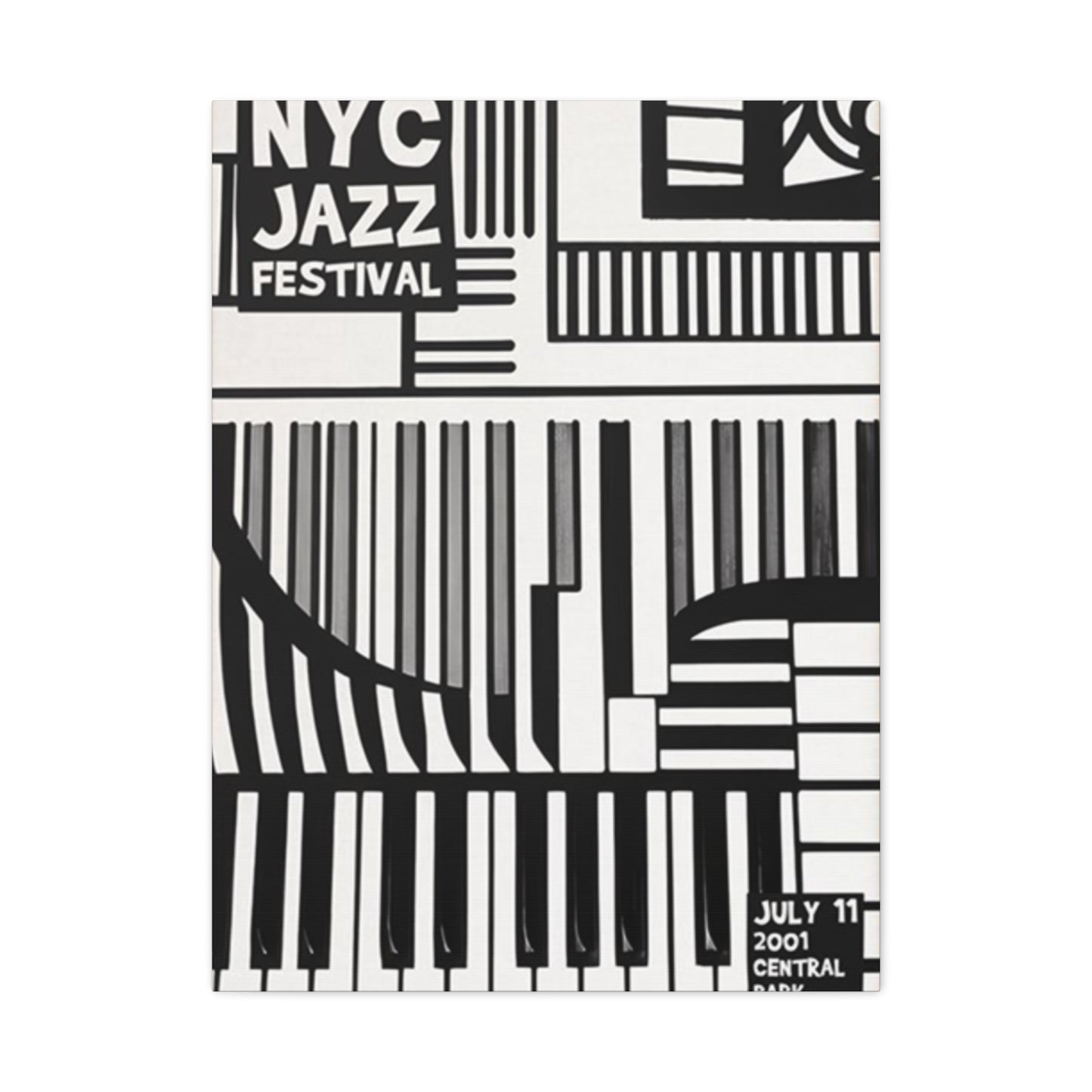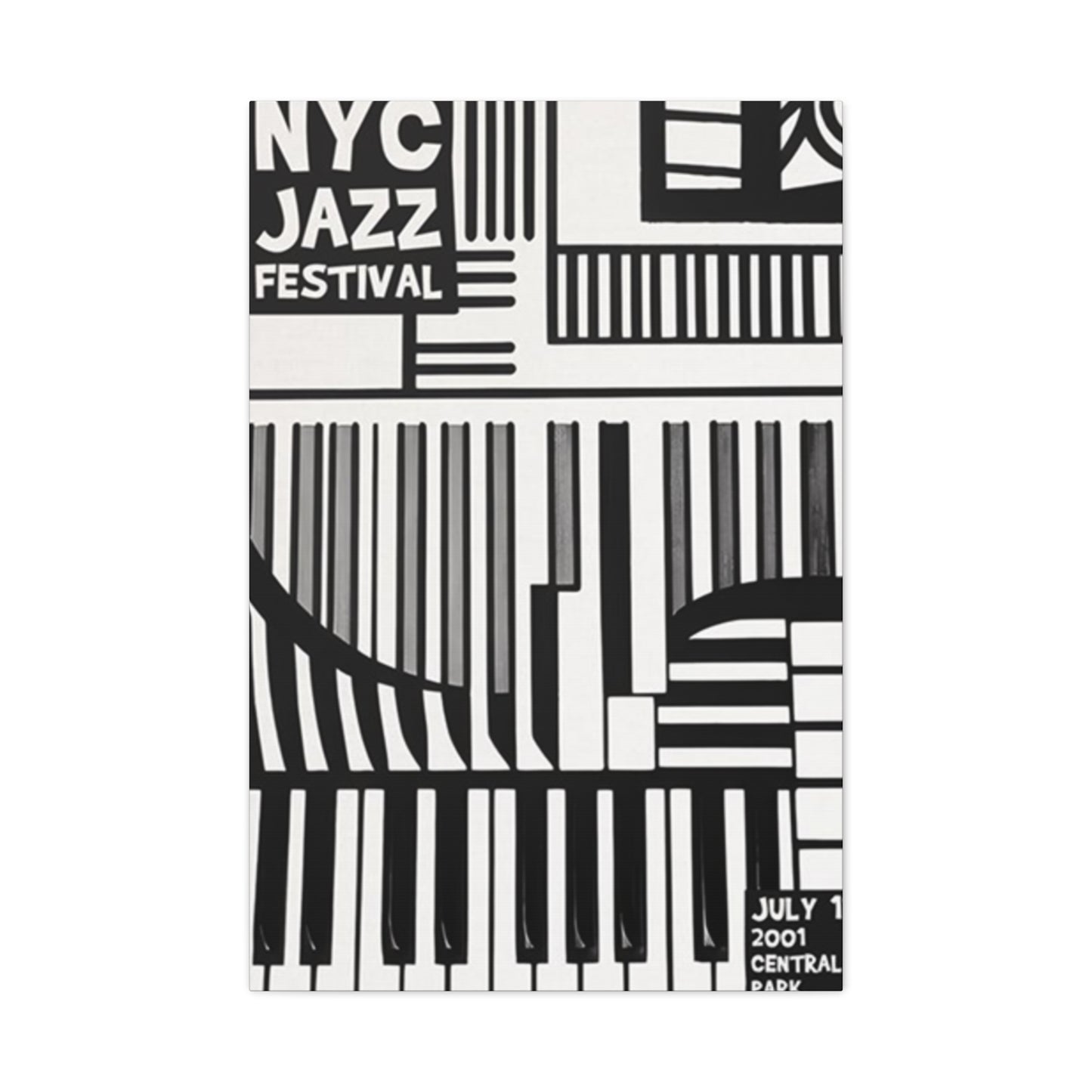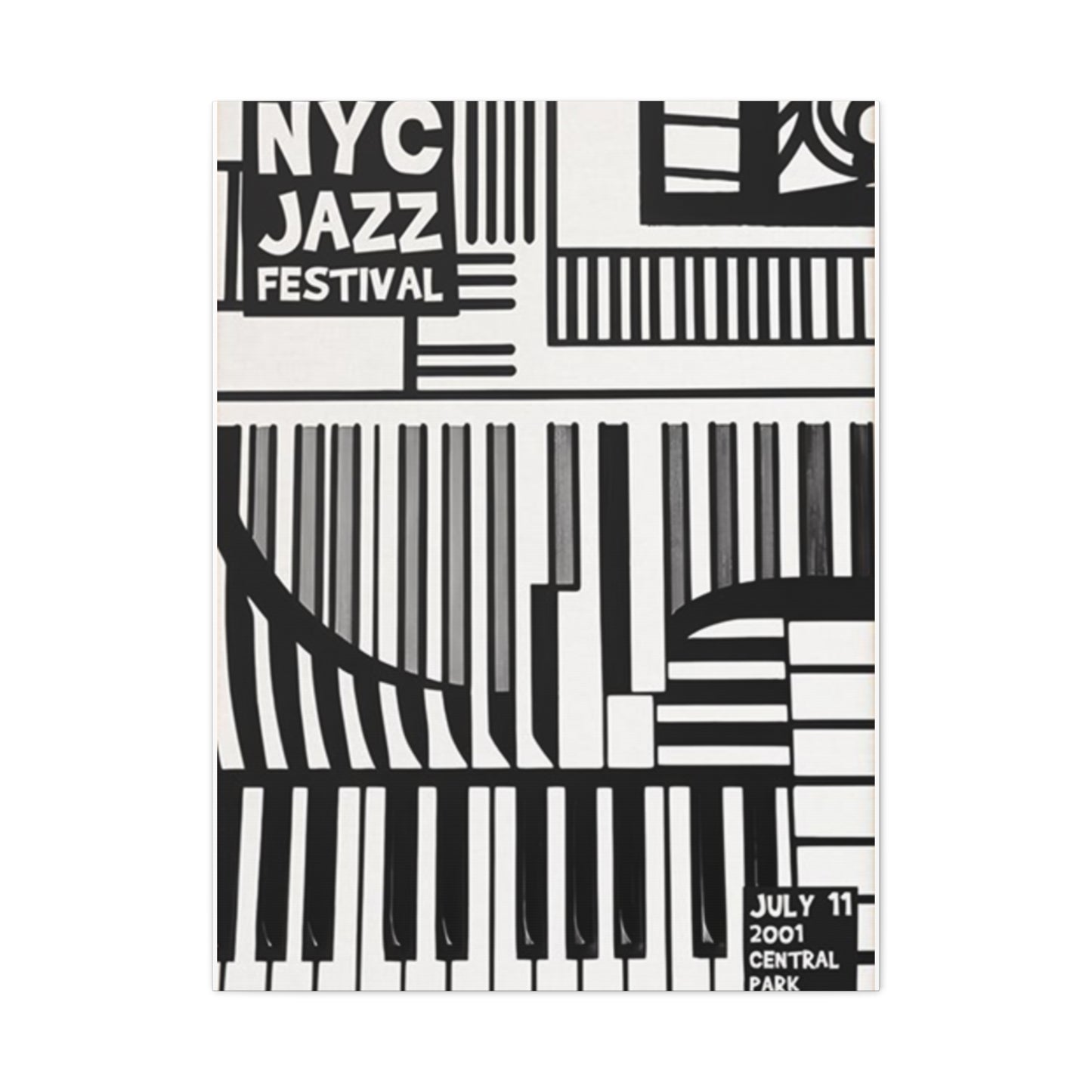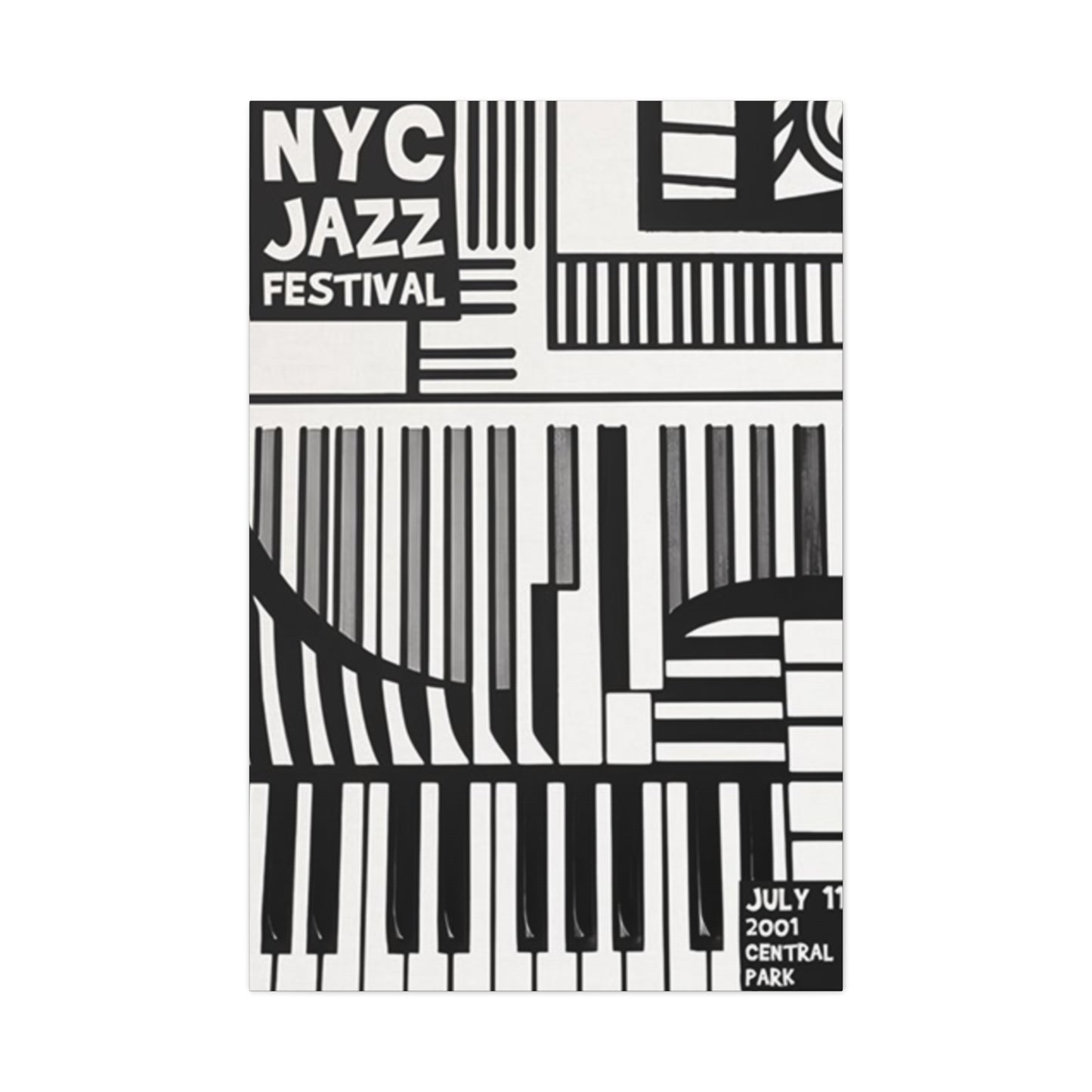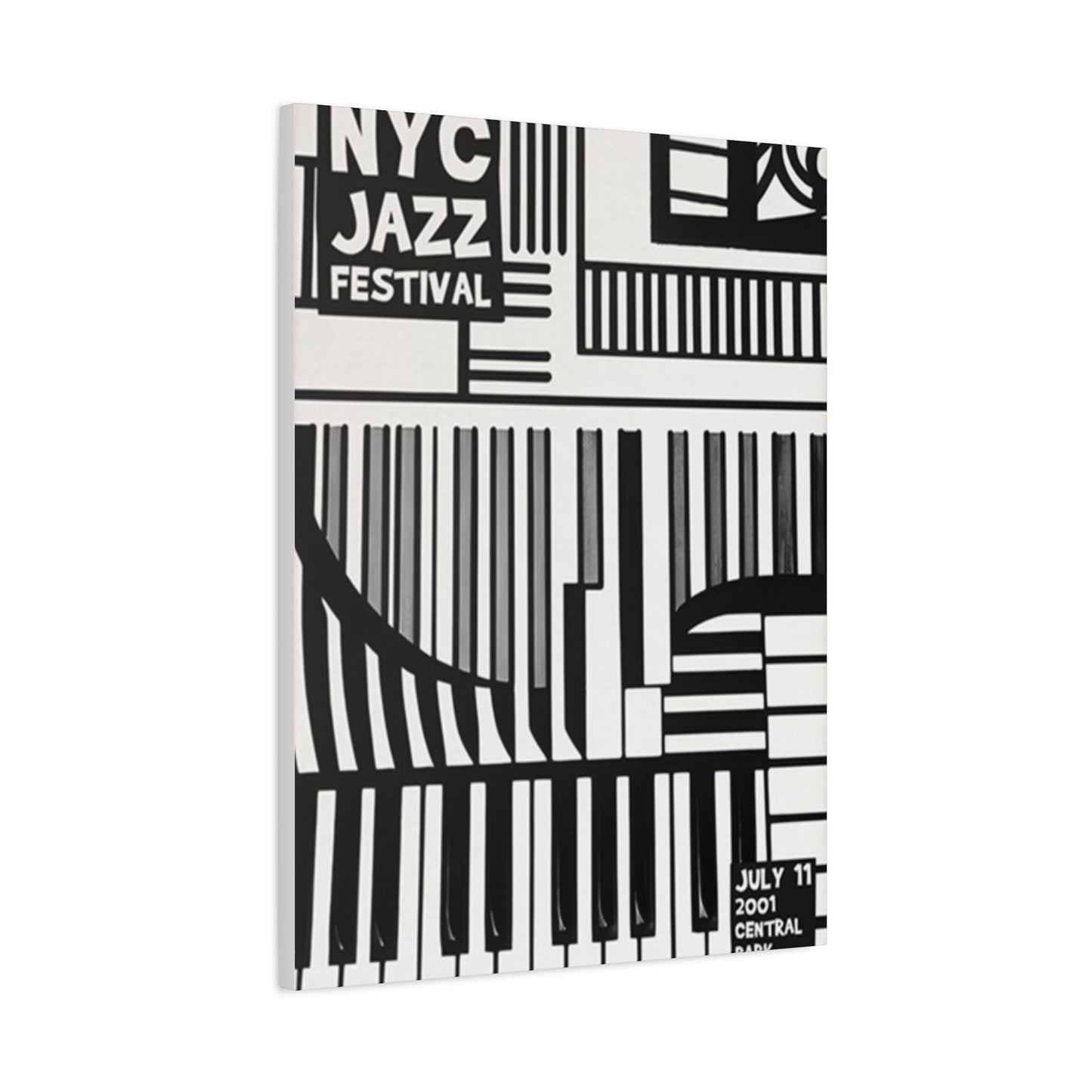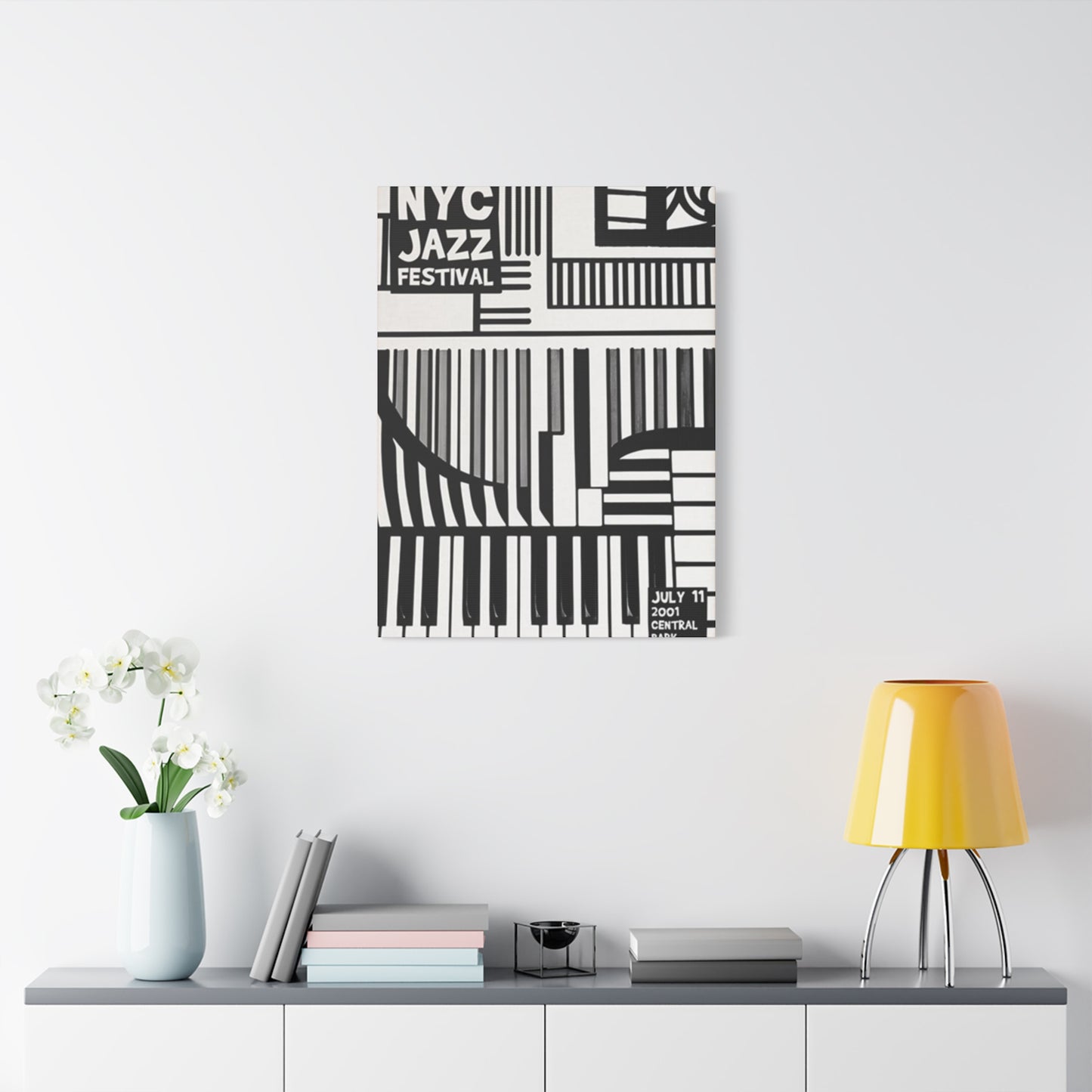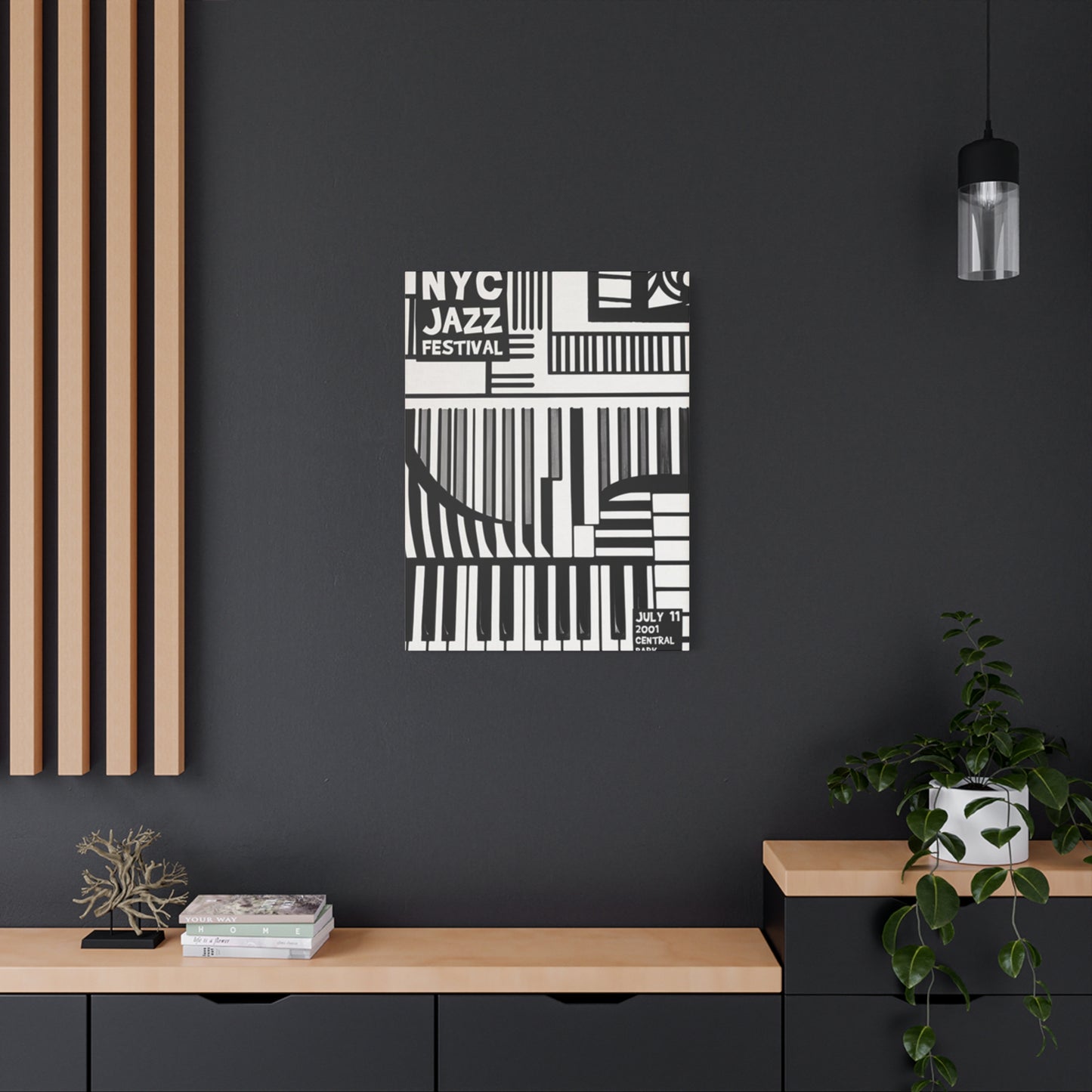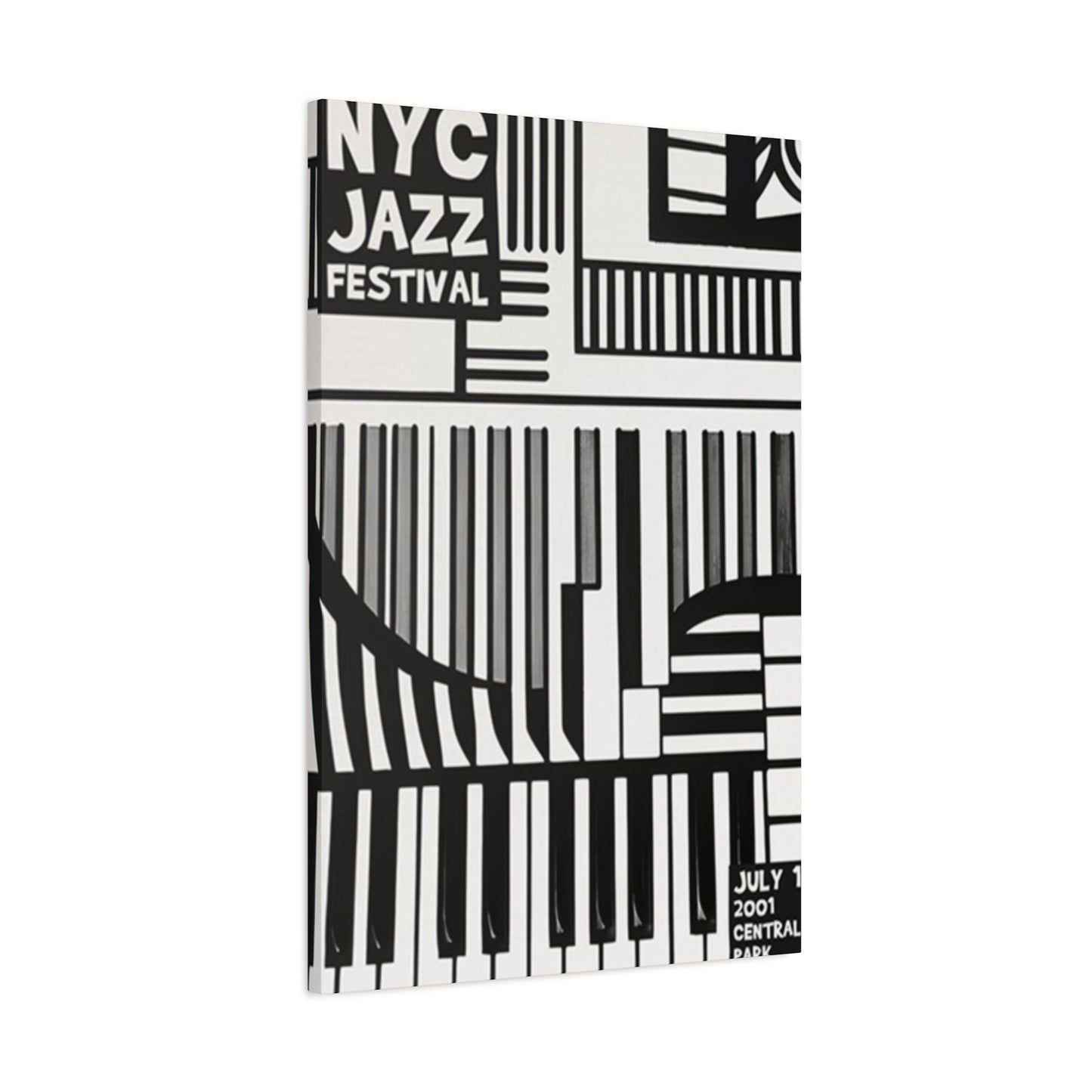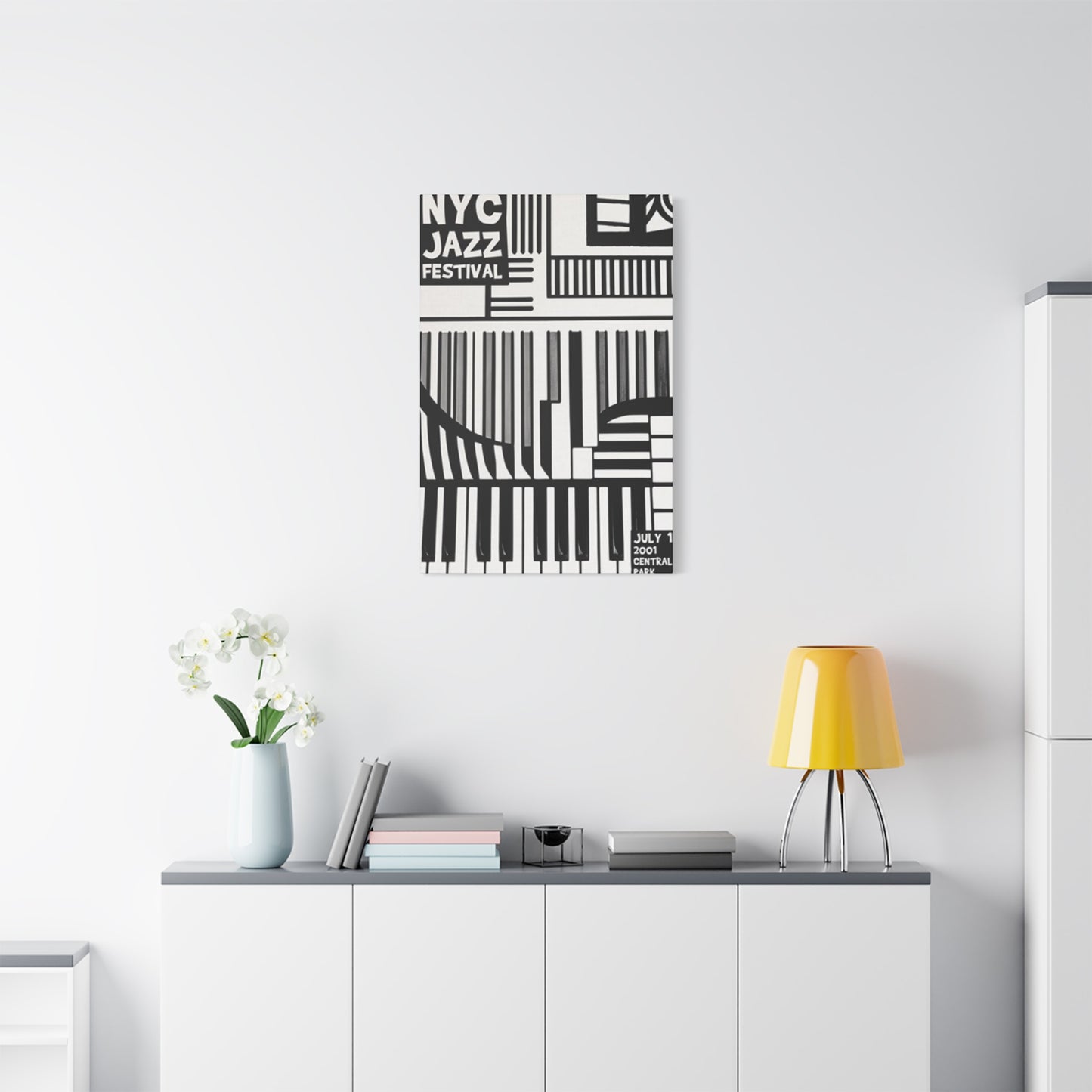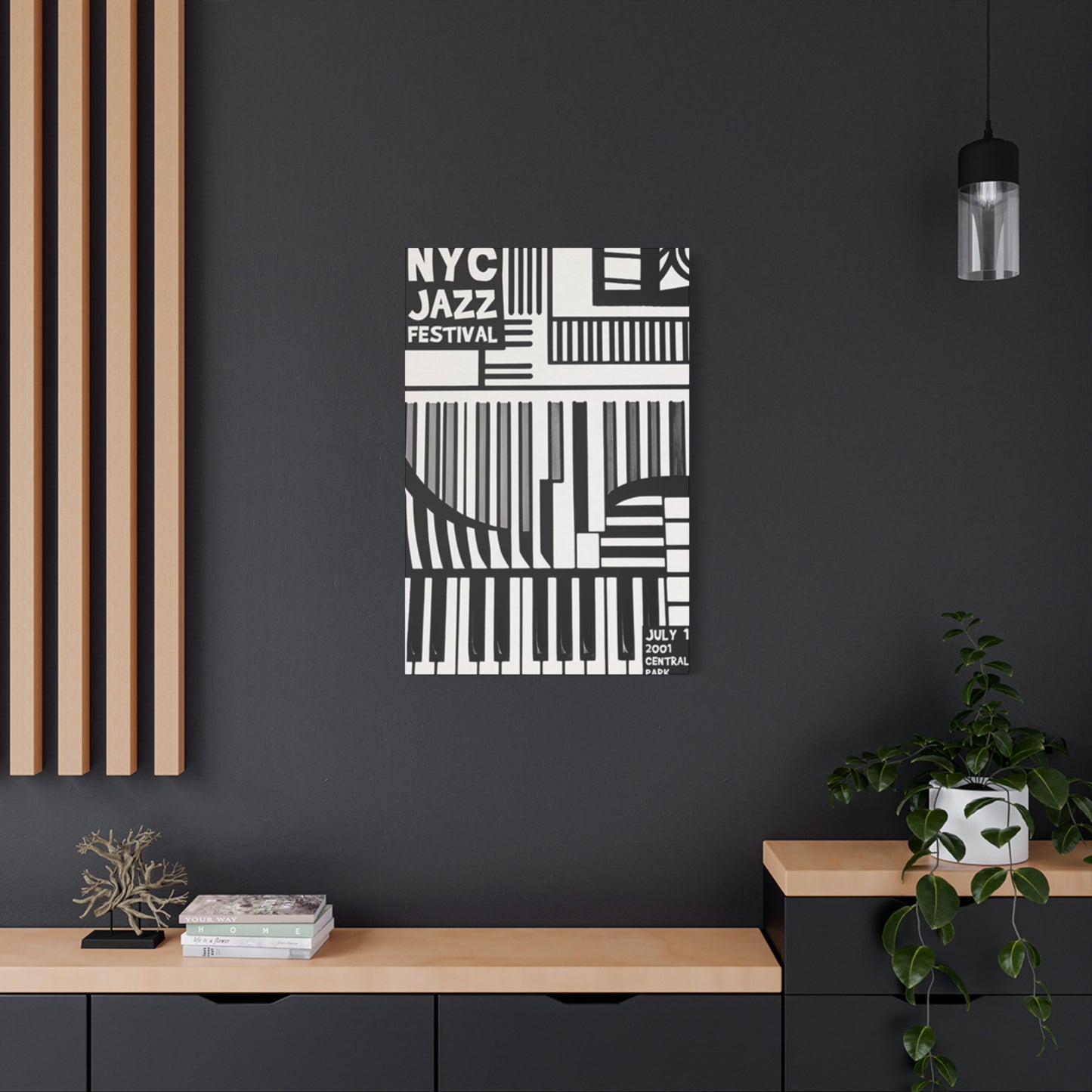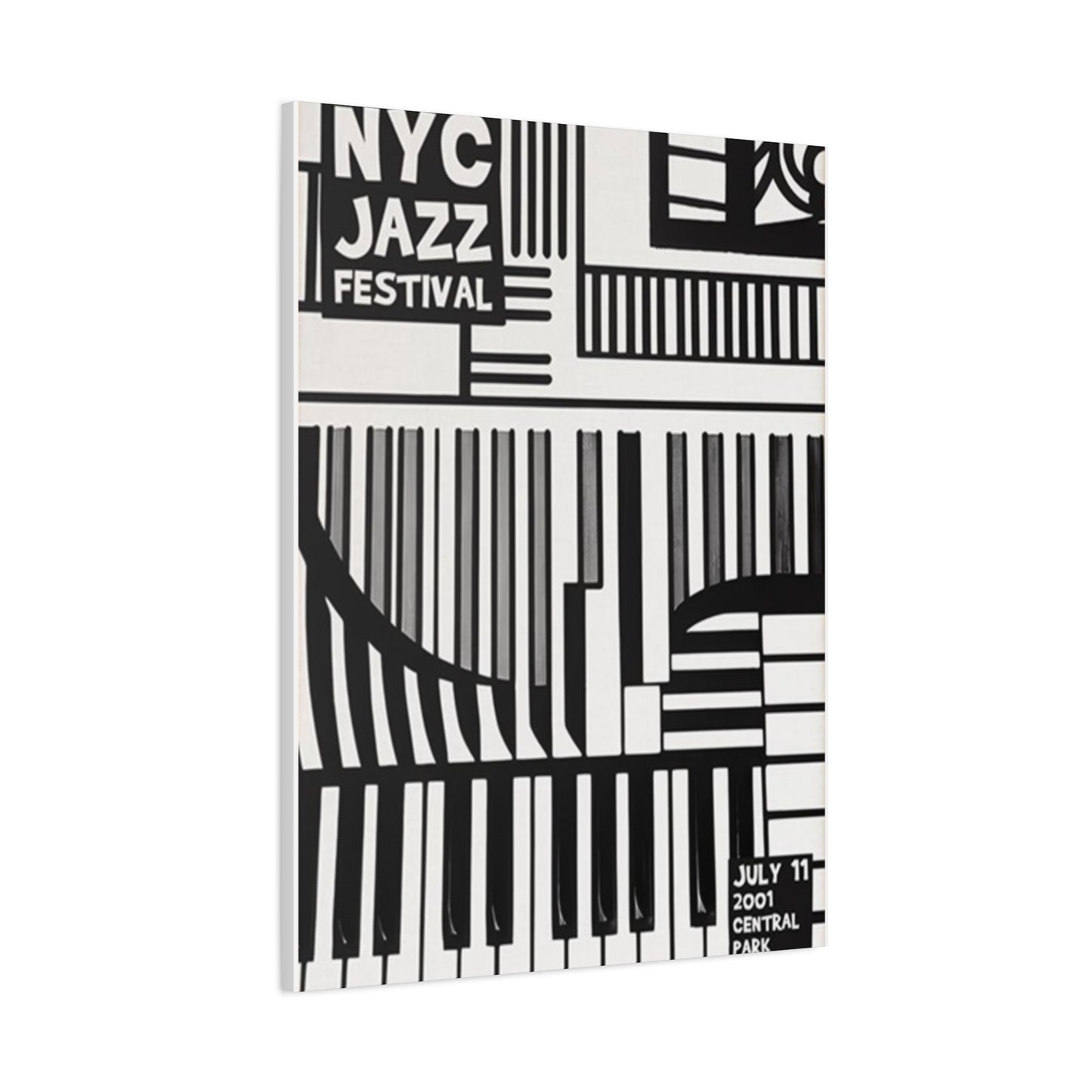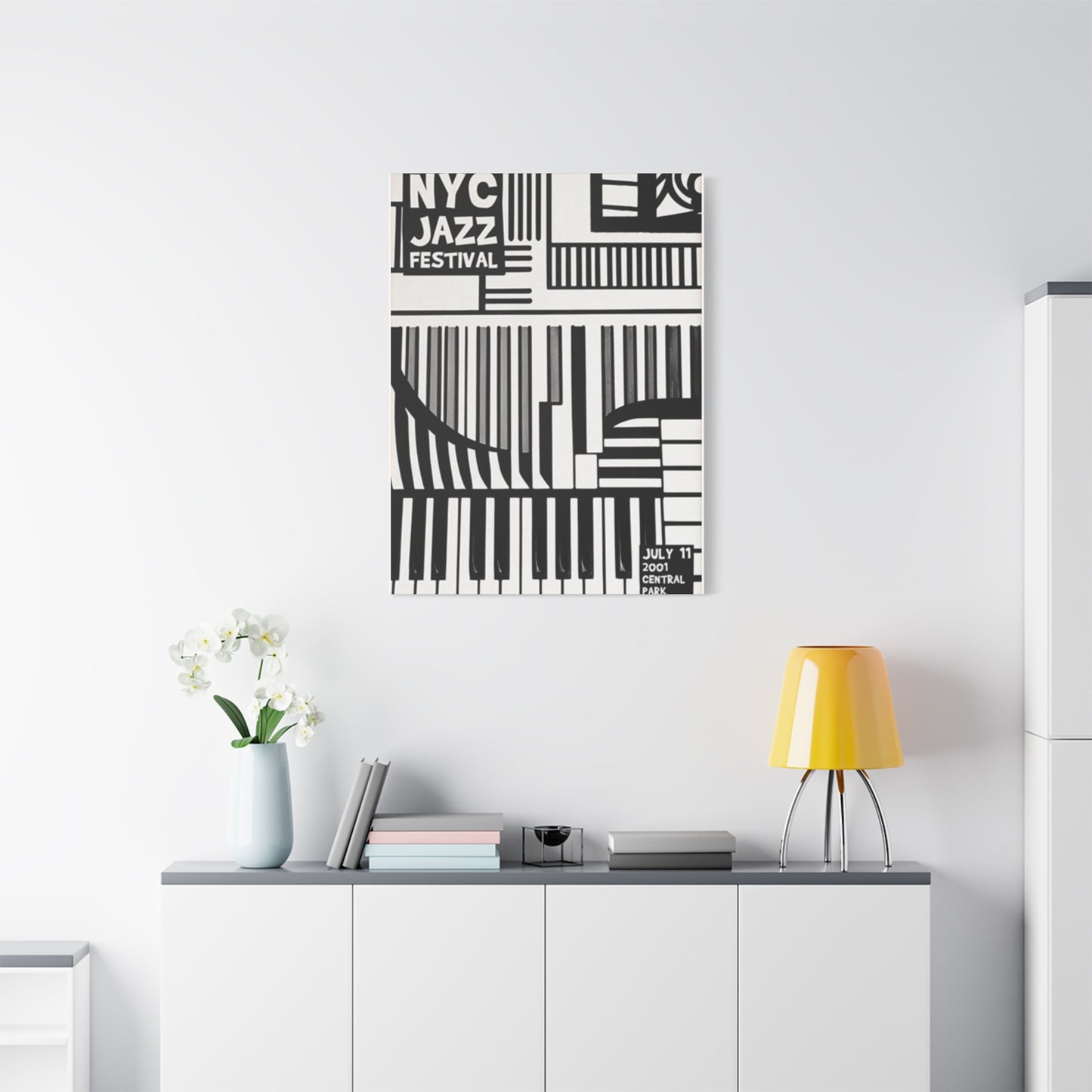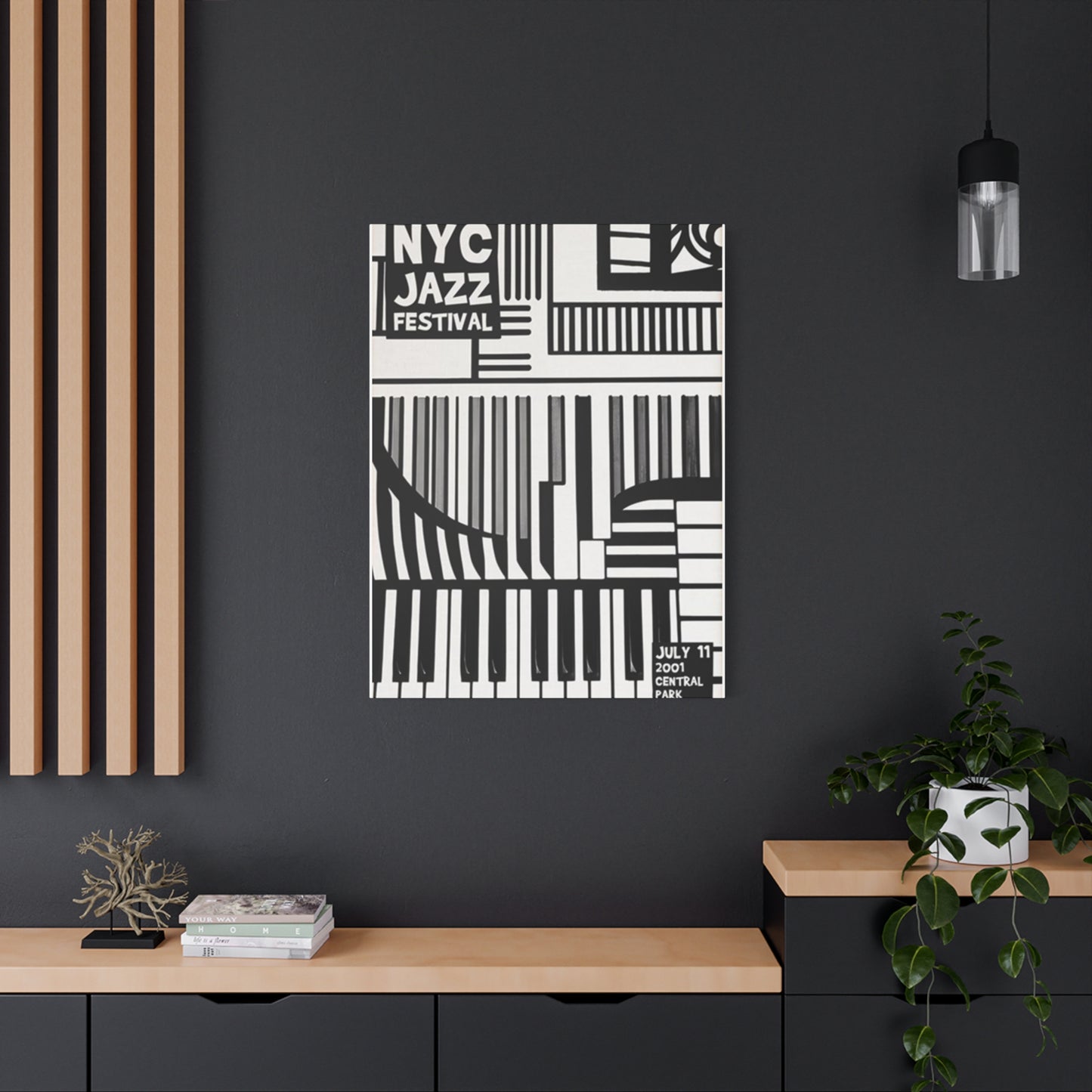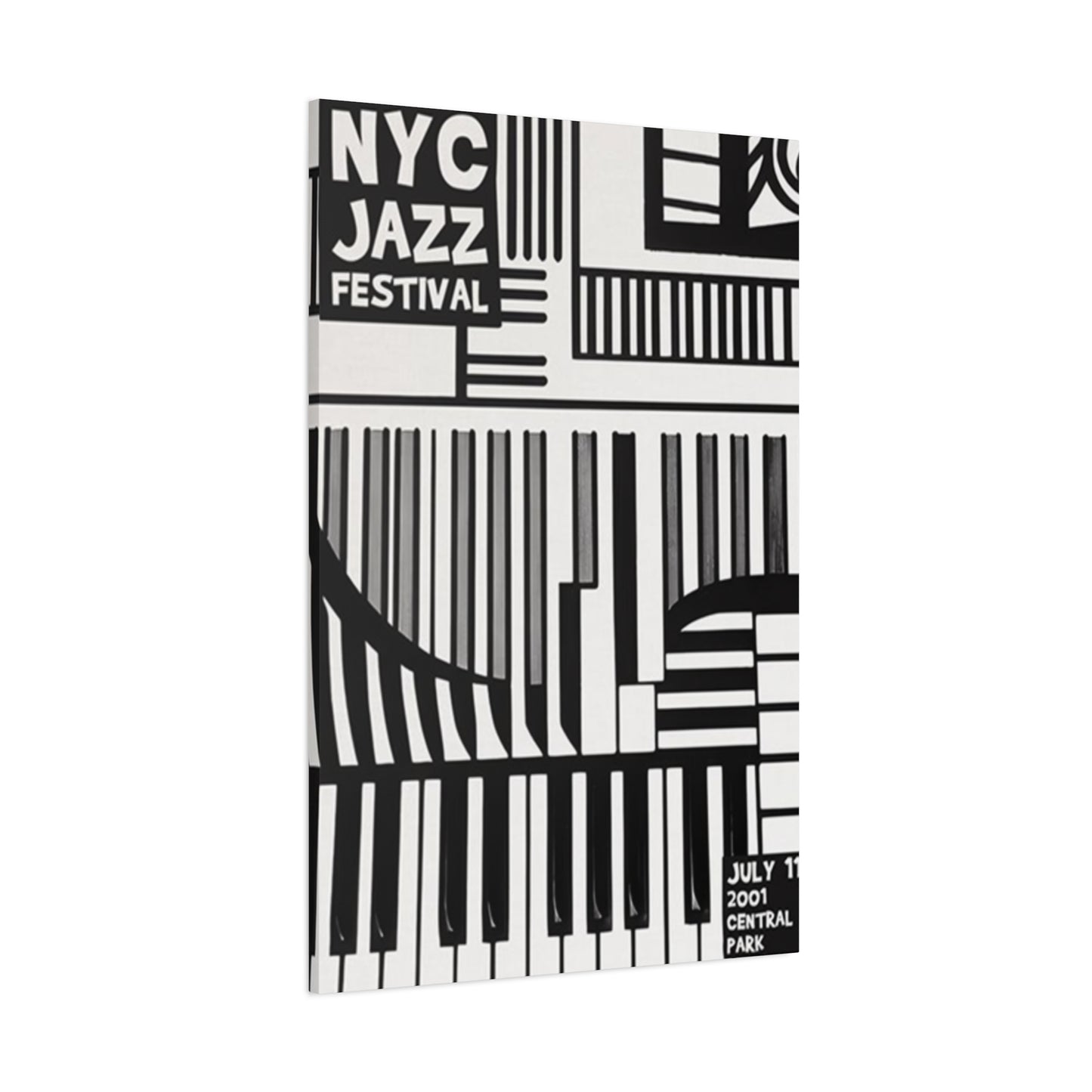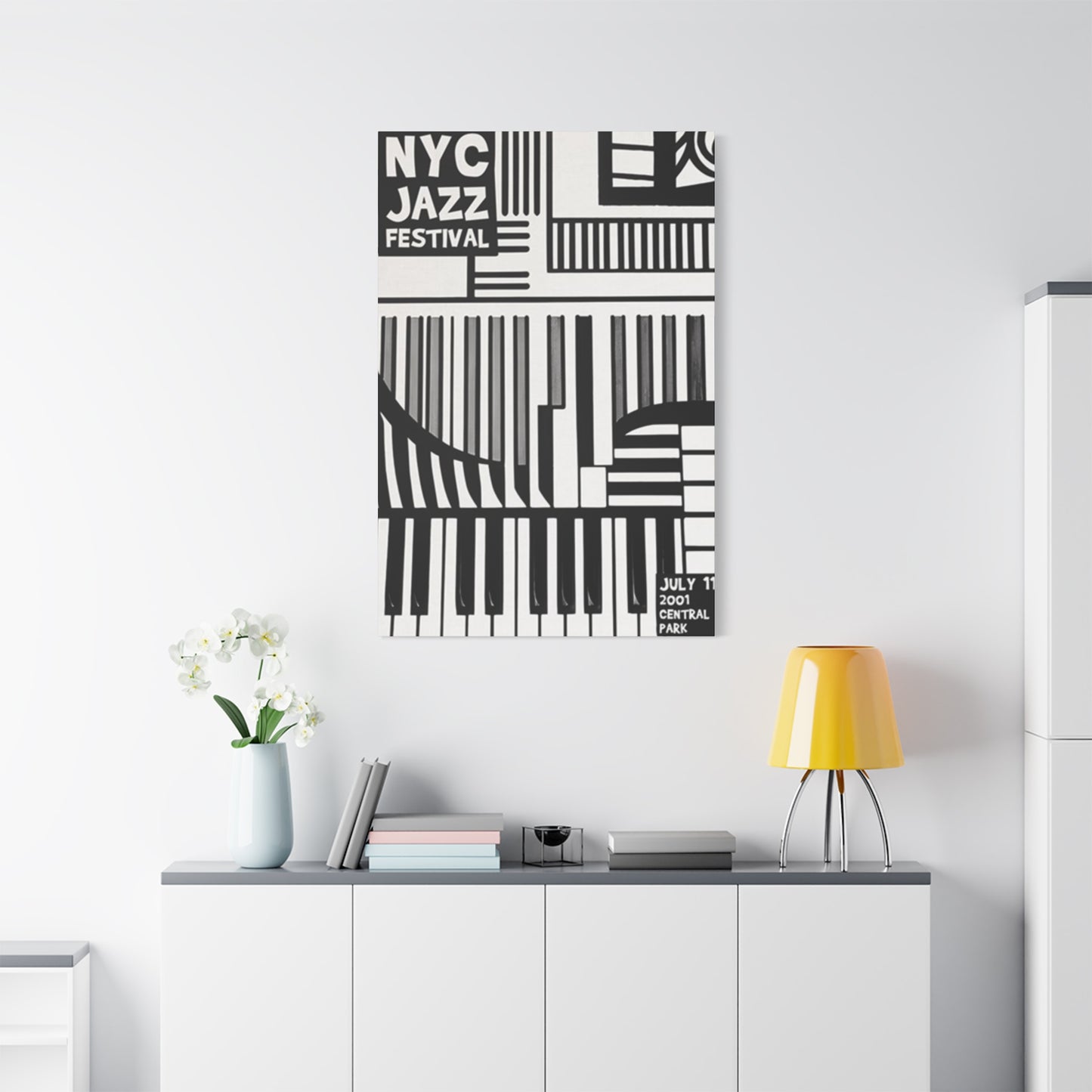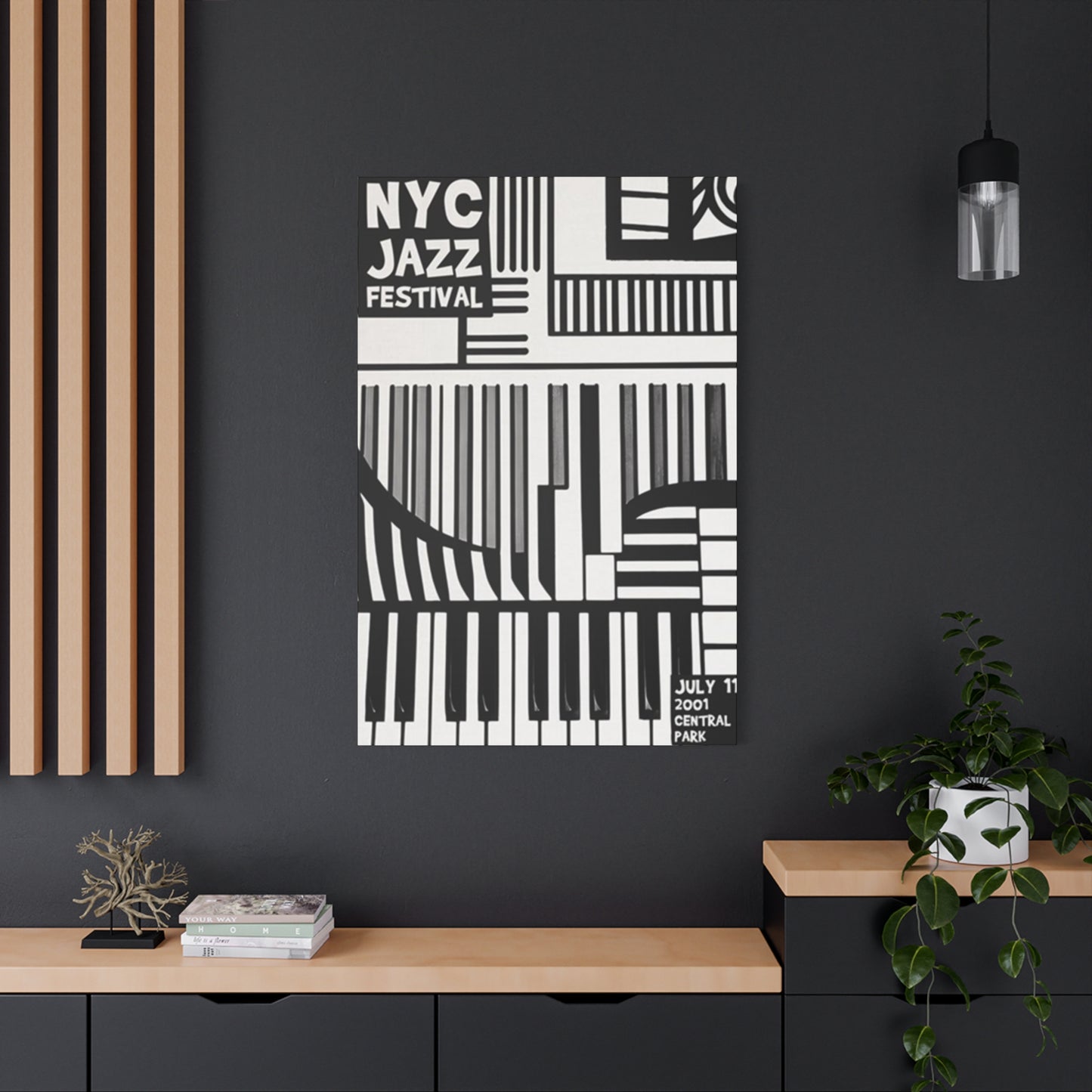NYC Jazz Festival Wall Art: Capturing Manhattan's Musical Heritage in Visual Form
New York City stands as the undisputed capital of jazz music, where legendary festivals have shaped the cultural landscape for decades. The rich tapestry of these musical celebrations provides endless inspiration for wall art that captures the essence of America's greatest musical export. From the smoky clubs of Greenwich Village to the grand stages of Central Park, NYC jazz festivals have created moments that deserve to be preserved and celebrated through stunning visual representations.
The history of jazz festivals in Manhattan dates back to the mid-20th century when visionaries recognized the need to bring this quintessentially American art form to wider audiences. These gatherings became more than mere concerts; they transformed into cultural movements that influenced fashion, art, photography, and the very fabric of urban life. Artists who witnessed these performances found themselves compelled to translate the energy, passion, and spontaneity of live jazz into visual mediums.
Contemporary wall art inspired by NYC jazz festivals serves multiple purposes beyond mere decoration. These pieces function as historical documents, capturing fleeting moments of musical genius and preserving them for future generations. They also serve as conversation starters, drawing viewers into discussions about music history, cultural evolution, and the unique atmosphere that only New York can provide.
The visual language of jazz-inspired artwork often incorporates elements that reflect the music's improvisational nature. Bold brushstrokes mirror the spontaneous solos of saxophone masters, while color palettes echo the mood and tempo of different musical pieces. Abstract representations allow viewers to experience the emotional journey that jazz music provides, creating a synesthetic experience where sound becomes visible.
Musicians who have graced NYC festival stages have left indelible marks on both the musical and visual arts worlds. Their performances, captured by photographers and interpreted by artists, become source material for wall art that celebrates not just individual talents but the collective spirit of jazz culture. These visual tributes often feature iconic instruments, silhouettes of performers, or abstract interpretations of musical notation.
Historical Significance of Manhattan's Jazz Festival Movement
The emergence of jazz festivals in New York City marked a pivotal moment in American cultural history. These events transcended traditional boundaries between high and popular culture, bringing together diverse audiences united by their appreciation for musical excellence. The visual documentation of these festivals through photography, illustration, and artistic interpretation has created a rich archive that continues to inspire contemporary wall art creators.
During the golden age of jazz festivals, New York became a pilgrimage destination for music lovers worldwide. The city's unique energy, combined with the incredible talent that performed at these events, created an atmosphere that photographers and artists struggled to capture adequately. However, those who succeeded in translating this energy into visual form created works that continue to resonate with audiences decades later.
The democratization of jazz through festivals also democratized the art inspired by these events. Unlike the exclusive gallery scene, jazz festival art reached broader audiences, appearing in homes, cafes, and public buildings. This accessibility helped establish a new category of wall art that celebrated American musical heritage while remaining approachable to everyday consumers.
Festival organizers often collaborated with visual artists to create promotional materials, poster designs, and commemorative artwork. These collaborations resulted in a distinctive aesthetic that combined musical themes with the visual language of mid-century modern design. The resulting artworks became collectibles in their own right, sought after by both music and art enthusiasts.
The influence of NYC jazz festivals extended beyond the musical realm, affecting fashion, literature, and visual arts in profound ways. Artists found inspiration not only in the music itself but in the fashion of the performers, the architecture of the venues, and the diverse crowds that attended these events. This multifaceted inspiration resulted in wall art that captured the complete cultural experience rather than focusing solely on musical elements.
Contemporary Artists Interpreting Jazz Festival Culture
Modern artists continue to find inspiration in NYC's jazz festival heritage, creating contemporary wall art that honors the past while speaking to current audiences. These artists employ various techniques and media to capture the essence of live jazz performance, from traditional painting and drawing to digital art and mixed media installations.
The challenge for contemporary artists lies in conveying the temporal nature of music through static visual media. Successful jazz-inspired wall art manages to suggest movement, sound, and emotion through careful composition, color choice, and technique. Artists often study historical photographs and film footage of jazz festivals to understand the visual elements that best convey the energy of live performance.
Many contemporary creators focus on specific aspects of jazz festival culture, such as the interaction between performers and audiences, the urban environment that surrounds these events, or the instruments themselves. By concentrating on particular elements, artists can create focused works that capture specific moods or moments associated with jazz festivals.
The availability of high-quality reproduction techniques has made jazz festival wall art more accessible than ever before. Artists can create original works knowing that they can be reproduced as prints, allowing music lovers to bring the spirit of NYC jazz festivals into their homes regardless of budget constraints. This accessibility has helped maintain the democratic spirit that characterized the original festival movement.
Digital art platforms have also opened new possibilities for jazz festival-inspired wall art. Artists can experiment with animation, interactive elements, and multimedia compositions that would have been impossible in traditional media. These innovations allow for new interpretations of jazz festival culture while maintaining connections to historical traditions.
The Visual Language of Jazz Festival Wall Art
Creating effective wall art inspired by NYC jazz festivals requires understanding the visual elements that best convey musical energy and cultural atmosphere. Color plays a crucial role, with warm tones often used to suggest the intimate atmosphere of jazz clubs, while cooler palettes might evoke the sophistication of concert hall performances. The interplay between warm and cool colors can suggest the dynamic range of jazz music itself.
Composition techniques in jazz festival wall art often mirror musical structures. Just as jazz compositions feature themes, variations, and improvisations, visual artworks might include recurring visual motifs that are developed and transformed throughout the piece. This parallel structure helps viewers understand the connection between the visual and musical arts.
Texture plays an important role in conveying the tactile aspects of jazz culture. Rough, gestural brushwork might suggest the raw energy of bebop, while smoother, more refined techniques could evoke the elegance of big band arrangements. Artists often experiment with mixed media to achieve textures that complement their chosen musical themes.
The representation of instruments in jazz festival wall art ranges from highly realistic depictions to abstract interpretations. Realistic representations allow viewers to identify specific instruments and perhaps recall the sounds they produce, while abstract treatments focus on the emotional impact of music rather than literal representation. Both approaches can be effective depending on the artist's goals and the intended audience.
Human figures in jazz festival wall art serve multiple purposes. They can represent specific musicians, generic performers, or audience members. The treatment of these figures often reflects the artist's perspective on jazz culture, whether emphasizing individual genius, collective creativity, or communal experience. Silhouettes are particularly popular as they allow viewers to project their own interpretations onto the figures.
Photography as Foundation for Jazz Festival Art
Many of the most compelling jazz festival wall art pieces begin with photographic documentation of actual performances. Photographers who captured the golden age of NYC jazz festivals created an invaluable archive that continues to inspire visual artists today. These photographs serve not only as reference material but as artworks in their own right.
The technical challenges of photographing jazz festivals in their heyday required photographers to work with limited lighting and fast-moving subjects. The resulting images often featured dramatic contrasts, grain, and motion blur that have become aesthetic signatures of jazz photography. Contemporary artists often incorporate these visual elements into their work to evoke the authentic atmosphere of historical jazz festivals.
Black and white photography dominated jazz festival documentation for many years, creating a visual tradition that continues to influence contemporary wall art. The monochromatic palette allows viewers to focus on composition, lighting, and emotion rather than being distracted by color. Many artists choose to work in limited color palettes or pure black and white to honor this photographic tradition.
The candid nature of much jazz festival photography captured spontaneous moments that studio portraits could never achieve. Musicians caught in the act of creation, audiences lost in musical rapture, and the general atmosphere of festival grounds provide rich source material for artists seeking to convey the authentic spirit of these events.
Modern digital photography and video have expanded the possibilities for documenting jazz festivals, but they have also changed the aesthetic associated with these events. Contemporary artists must decide whether to embrace modern visual styles or maintain connections to the historical aesthetic that many associate with authentic jazz culture.
The Role of Venue Architecture in Jazz Festival Imagery
The architectural settings where NYC jazz festivals take place contribute significantly to the visual character of festival-inspired wall art. From the intimate confines of historic jazz clubs to the grandeur of outdoor festival stages, these venues provide important contextual elements that help define the mood and atmosphere of jazz-inspired artwork.
Historic venues like the Village Vanguard, Blue Note, and Apollo Theater carry decades of musical history in their architectural details. Artists often incorporate elements like exposed brick walls, vintage lighting fixtures, and classic stage configurations into their festival-inspired works. These architectural elements help viewers connect the artwork to specific places and times in jazz history.
Outdoor festival venues present different visual opportunities and challenges. Central Park concert stages, waterfront festival grounds, and street fair setups each contribute unique atmospheric elements to jazz festival imagery. The contrast between natural and urban environments, the play of natural and artificial lighting, and the integration of temporary festival infrastructure with permanent city architecture all provide rich visual material.
The scale relationship between performers and venues also influences the emotional impact of jazz festival wall art. Intimate club settings suggest personal connection and musical intimacy, while large outdoor venues convey the communal aspect of festival experiences. Artists can manipulate these scale relationships to emphasize different aspects of jazz culture.
Contemporary festival venues often feature modern architectural elements that present both opportunities and challenges for artists seeking to maintain connections to jazz tradition. Successful contemporary jazz festival wall art often finds ways to honor historical associations while acknowledging the evolution of performance venues and presentation styles.
Color Theory and Emotional Resonance in Jazz Art
The emotional power of jazz music translates into visual art through careful consideration of color relationships and psychological associations. Warm color palettes dominated by reds, oranges, and golds often evoke the passionate, energetic aspects of jazz performance, while cooler palettes featuring blues and purples might suggest more contemplative or melancholic musical moods.
The concept of musical keys having color associations, known as synesthesia, influences many jazz festival wall art pieces. Artists often research the theoretical relationships between musical and color harmonies to create works that reinforce the emotional content of specific songs or performances. These connections can be either scientifically based or purely intuitive.
Contrast ratios in jazz festival wall art often mirror the dynamic range of jazz music itself. Soft, subtle color transitions might represent quiet instrumental solos, while bold, high-contrast combinations suggest the energy of full ensemble performances. This visual dynamic range helps viewers experience something analogous to the musical journey that jazz provides.
The historical color associations of different jazz eras also influence contemporary wall art. The sepia tones associated with early jazz recordings, the vibrant colors of swing era fashion, and the more subdued palettes of cool jazz all provide starting points for artists seeking to evoke specific periods in jazz history.
Modern printing and display technologies have expanded the color possibilities available to jazz festival wall art creators. However, many artists choose to work within historically inspired color limitations to maintain authentic connections to jazz tradition and ensure their works will complement a variety of display environments.
The Economics and Accessibility of Jazz Festival Wall Art
The market for jazz festival-inspired wall art reflects the broader democratization of both jazz music and visual art. Unlike traditional fine art markets, jazz festival wall art serves a diverse audience with varying budgets and aesthetic preferences. This accessibility maintains the inclusive spirit that has always characterized jazz culture.
Print reproduction technology has made jazz festival wall art available to music enthusiasts regardless of their economic circumstances. High-quality giclée prints can reproduce the subtle color gradations and fine details of original artworks, making professional-quality jazz festival art accessible to anyone who appreciates this cultural heritage.
The rise of online marketplaces has connected jazz festival wall art creators directly with their audiences, bypassing traditional gallery systems that might have limited access to these works. This direct connection allows artists to maintain reasonable prices while still earning sustainable incomes from their jazz-inspired creations.
Custom and commissioned jazz festival wall art has become increasingly popular as homeowners seek to create unique environments that reflect their personal connections to jazz culture. Artists often work with clients to create pieces that reference specific festivals, musicians, or musical memories, resulting in highly personalized artworks.
The collectible nature of vintage jazz festival posters and promotional materials has created a secondary market that influences contemporary wall art pricing and aesthetics. New artists often study these historical collectibles to understand what visual elements resonate most strongly with jazz enthusiasts.
Digital Innovation in Jazz Festival Wall Art
Modern technology has opened new possibilities for creating and experiencing jazz festival-inspired wall art. Digital art tools allow artists to experiment with effects and techniques that would be difficult or impossible to achieve with traditional media. These innovations expand the visual vocabulary available for expressing jazz festival culture.
Augmented reality applications can enhance static jazz festival wall art by adding interactive elements, animation, or even synchronized audio components. These technological enhancements allow viewers to experience something closer to the multimedia nature of actual festival attendance while maintaining the aesthetic appeal of traditional wall art.
Social media platforms have transformed how jazz festival wall art reaches its audience. Artists can share works in progress, gather feedback from jazz enthusiasts worldwide, and build communities around their creative processes. This interaction helps ensure that contemporary jazz festival wall art remains relevant to current audiences while honoring historical traditions.
Digital printing on various materials has expanded the possibilities for how jazz festival wall art can be displayed. Canvas, metal, acrylic, and fabric substrates each offer different aesthetic qualities that can enhance the emotional impact of jazz-inspired imagery. Artists can choose materials that best complement their artistic vision and the intended display environment.
The preservation of digital jazz festival wall art presents both opportunities and challenges. While digital files can be reproduced indefinitely without quality loss, they also require ongoing technology support to remain accessible. Artists and collectors must consider long-term preservation strategies for digital artworks.
Cultural Appropriation and Authenticity in Jazz Art
Creating wall art inspired by jazz festival culture requires sensitivity to issues of cultural appropriation and authenticity. Jazz music has deep roots in African American culture, and artists from all backgrounds must approach this subject matter with respect and understanding. Successful jazz festival wall art honors these cultural origins while allowing for diverse artistic interpretations.
Research into jazz history and culture helps artists create works that are both aesthetically appealing and culturally appropriate. Understanding the social and political contexts that gave rise to jazz music enables artists to create wall art that celebrates this cultural heritage responsibly. This research often reveals rich details that can inform artistic choices and deepen the meaning of the resulting works.
Collaboration between artists from different cultural backgrounds can result in jazz festival wall art that brings multiple perspectives to this rich cultural tradition. These collaborations often produce works that are more nuanced and authentic than those created by individual artists working in isolation.
The global appeal of jazz music has resulted in artists from many countries creating jazz festival-inspired wall art. These international perspectives can offer fresh insights into jazz culture while raising questions about cultural ownership and artistic interpretation. The best international jazz festival wall art manages to honor American jazz traditions while bringing unique cultural perspectives to the subject matter.
Contemporary jazz festival wall art must also navigate changing cultural attitudes and social awareness. Artists today are more conscious of representation issues and work to create inclusive imagery that reflects the diversity of contemporary jazz audiences while maintaining connections to historical jazz culture.
Jazz Festival Wall Art in Living Environments
The placement of jazz festival wall art in homes and other environments creates psychological and emotional effects that extend beyond mere aesthetic appreciation. These artworks can transform living environments by introducing energy, sophistication, and cultural depth that reflects the inhabitants' appreciation for musical excellence and cultural heritage.
Research in environmental psychology suggests that music-themed artwork can influence mood and behavior in positive ways. Jazz festival wall art, with its associations with creativity, improvisation, and cultural sophistication, can create environments that feel more dynamic and inspiring. These psychological benefits help explain the enduring popularity of jazz-inspired visual art.
The social aspects of jazz culture translate into wall art that serves as conversation starters and social focal points. Guests often respond to jazz festival imagery with their own musical memories and associations, creating opportunities for meaningful social interaction. This social dimension adds functional value to the aesthetic appeal of jazz festival wall art.
The aspirational aspects of jazz culture also influence how people respond to jazz festival wall art. Jazz has long been associated with sophistication, creativity, and cultural awareness, qualities that many people aspire to embody in their personal environments. Displaying jazz festival wall art can be a way of expressing these aspirational identities.
Different rooms and environments may call for different approaches to jazz festival wall art. Living areas might feature more energetic, colorful pieces that encourage social interaction, while bedrooms or studies might benefit from more contemplative, subdued jazz-inspired artworks. Understanding these environmental considerations helps in selecting appropriate pieces.
Technical Considerations for Displaying Jazz Festival Wall Art
Proper display techniques are essential for maximizing the impact of jazz festival wall art while ensuring long-term preservation. Lighting considerations are particularly important, as these artworks often rely on subtle color relationships and contrasts that can be affected by inappropriate illumination. LED lighting systems offer excellent color rendering while minimizing heat and UV exposure.
Framing choices for jazz festival wall art should complement rather than compete with the artwork itself. Simple, classic frames often work best, allowing the energy and color of the artwork to dominate the visual presentation. However, some contemporary pieces might benefit from more elaborate framing that becomes part of the overall artistic statement.
The scale relationship between jazz festival wall art and its display environment requires careful consideration. Large pieces can create dramatic focal points but may overwhelm smaller rooms, while smaller pieces might get lost in expansive environments. Understanding these proportional relationships helps ensure successful integration of jazz festival wall art into living and working environments.
Climate control considerations are important for preserving jazz festival wall art, particularly pieces created with traditional materials. Temperature fluctuations, humidity changes, and air quality issues can all affect the longevity of these artworks. Proper environmental controls help ensure that jazz festival wall art can be enjoyed for generations.
The arrangement of multiple jazz festival wall art pieces requires understanding of visual composition principles. Groups of related pieces can create powerful visual narratives, while individual pieces might serve as standalone statements. The spacing, alignment, and thematic relationships between pieces all contribute to the overall visual impact.
The Future of Jazz Festival Wall Art
Emerging technologies and changing cultural attitudes will continue to influence the development of jazz festival wall art. Virtual and augmented reality technologies may eventually allow for immersive jazz festival experiences that combine visual art with spatial audio and interactive elements. These innovations could revolutionize how people experience jazz festival culture in their homes.
Sustainability concerns are increasingly influencing art production and consumption patterns. Future jazz festival wall art may place greater emphasis on environmentally responsible materials and production methods. This shift toward sustainability aligns with the socially conscious values that have always been associated with jazz culture.
The democratization of art creation tools means that more people can participate in creating jazz festival wall art. Digital art applications, online tutorials, and accessible printing services enable jazz enthusiasts to create their own festival-inspired artworks. This participation could lead to even greater diversity in jazz festival wall art styles and approaches.
Globalization continues to spread jazz culture to new audiences worldwide, potentially inspiring new approaches to jazz festival wall art that incorporate diverse cultural perspectives. These international influences could enrich the visual vocabulary of jazz festival art while challenging traditional assumptions about what constitutes authentic jazz imagery.
The aging of the original jazz festival generation raises questions about how this cultural heritage will be preserved and transmitted to future audiences. Wall art inspired by jazz festivals serves as one important mechanism for keeping this cultural memory alive and relevant to new generations of music lovers.
Applications of Jazz Festival Wall Art
Educational institutions increasingly recognize the value of jazz festival wall art for teaching music history, cultural studies, and visual arts. These artworks provide tangible connections to historical events and cultural movements that might otherwise remain abstract for students. The visual impact of festival-inspired art can make jazz history more engaging and memorable.
Museums and cultural centers use jazz festival wall art to create immersive environments that help visitors understand the cultural significance of jazz music. These installations often combine historical photographs, contemporary artistic interpretations, and interactive elements to create comprehensive educational experiences.
Music education programs can use jazz festival wall art to help students understand the visual dimensions of musical performance. By studying how artists have interpreted jazz festivals visually, students can develop a more comprehensive understanding of how different art forms can complement and enhance each other.
Art therapy applications have found jazz festival wall art particularly effective for encouraging creative expression and emotional processing. The improvisational nature of jazz music resonates with therapeutic approaches that emphasize spontaneity and personal expression. Creating jazz-inspired artwork can provide therapeutic benefits while connecting participants to broader cultural traditions.
Community arts programs often use jazz festival themes to bring together diverse participants around shared cultural experiences. These programs can help build community connections while providing opportunities for creative expression and cultural education.
The Intersection of Jazz Festival Art and Home Decoration Trends
Contemporary home decoration trends increasingly emphasize personal expression and cultural authenticity, making jazz festival wall art particularly relevant for modern interior aesthetics. The current preference for curated, meaningful decoration over mass-produced items aligns perfectly with the cultural depth and artistic quality of jazz festival-inspired artwork.
The resurgence of interest in mid-century modern design has created new appreciation for the aesthetic elements associated with jazz festival culture. The clean lines, bold colors, and sophisticated compositions that characterize this design movement complement jazz festival wall art beautifully, creating cohesive decorative schemes that feel both nostalgic and contemporary.
Industrial and loft-style living environments provide ideal backdrops for jazz festival wall art, echoing the urban environments where much of jazz culture developed. The combination of exposed architectural elements with sophisticated cultural artwork creates environments that feel both edgy and refined.
The trend toward creating dedicated entertainment and listening environments in homes has increased demand for music-themed wall art. Jazz festival pieces work particularly well in these applications because they celebrate the live performance experience that many music enthusiasts seek to recreate in their personal environments.
Maximalist decorating trends that encourage bold color combinations and eclectic artwork collections provide opportunities for jazz festival wall art to serve as focal points in complex visual compositions. The energy and dynamism of jazz-inspired imagery can anchor decorative schemes that might otherwise feel chaotic.
Regional Variations in NYC Jazz Festival Culture
Different neighborhoods and boroughs of New York City have developed distinct jazz festival traditions that influence the character of related wall art. Harlem's historic role as the birthplace of many jazz innovations creates a particular aesthetic vocabulary that emphasizes cultural pride and historical significance. Wall art inspired by Harlem jazz festivals often incorporates architectural elements and cultural symbols specific to this legendary neighborhood.
Greenwich Village's intimate club scene has produced jazz festival wall art that emphasizes personal connection and artistic authenticity. The bohemian atmosphere of the Village jazz scene translates into visual art that often features more experimental and avant-garde approaches to representing musical culture.
Brooklyn's contemporary jazz scene has influenced wall art that bridges traditional jazz aesthetics with modern urban culture. These pieces often incorporate elements from street art, contemporary graphic design, and multimedia installations, reflecting the borough's role as an incubator for innovative cultural expression.
Queens' diversity has contributed to jazz festival wall art that incorporates multicultural influences, reflecting the borough's role in introducing international perspectives to American jazz culture. These pieces often feature fusion elements that combine traditional jazz imagery with visual traditions from various immigrant communities.
The Bronx's contribution to jazz and hip-hop culture has created opportunities for wall art that explores the connections between different musical traditions. This cross-genre approach to jazz festival art reflects the ongoing evolution of American music culture.
The Role of Jazz Festival Wall Art in Cultural Preservation
Wall art inspired by NYC jazz festivals serves an important function in preserving cultural memory and transmitting it to future generations. As the original participants in historic jazz festivals age and pass away, visual art becomes one of the primary means for keeping these cultural experiences alive and relevant.
The documentation aspect of jazz festival wall art extends beyond mere historical record-keeping to include emotional and atmospheric preservation. While photographs and recordings can capture specific moments and sounds, wall art can convey the overall feeling and energy of jazz festival experiences in ways that other media cannot.
Cultural institutions increasingly recognize the value of jazz festival wall art for their permanent collections and educational programs. These artworks provide accessible entry points for understanding complex cultural histories and can help institutions connect with diverse audiences who might not otherwise engage with traditional museum presentations.
The commercial viability of jazz festival wall art helps ensure its continued production and distribution. Unlike purely historical artifacts that exist in limited quantities, contemporary jazz festival art can be reproduced and distributed widely, making this cultural heritage accessible to broad audiences.
The international appeal of jazz festival wall art contributes to the global understanding and appreciation of American cultural contributions. These artworks serve as cultural ambassadors, helping to maintain America's soft power influence through cultural rather than political means.
Collecting and Investing in Jazz Festival Wall Art
The market for jazz festival wall art has developed sophisticated collecting communities that approach these pieces as both aesthetic objects and cultural investments. Understanding market trends, artist reputations, and historical significance can help collectors make informed decisions about acquiring jazz festival-inspired artwork.
Limited edition prints and original works by established artists often appreciate in value over time, making jazz festival wall art a viable alternative investment category. However, the primary motivation for most collectors remains aesthetic and cultural appreciation rather than purely financial considerations.
Authentication and provenance documentation are important considerations when collecting jazz festival wall art, particularly for pieces that reference specific historical events or feature recognizable musicians. Established authentication procedures help protect collectors and maintain market confidence.
The condition assessment of jazz festival wall art requires understanding of the various media and techniques used by different artists. Proper storage, display, and conservation practices help maintain the value and appearance of these artworks over time.
Insurance and security considerations for jazz festival wall art collections depend on the value and rarity of individual pieces. Professional appraisals can help collectors understand the replacement costs and appropriate protection measures for their artworks.
The Impact of Streaming and Digital Music on Jazz Festival Art
The digital revolution in music consumption has created new contexts for jazz festival wall art. As physical albums become less common and music becomes increasingly ephemeral, wall art provides a way to create tangible connections to musical experiences and cultural heritage.
Streaming platforms have introduced new audiences to jazz music, potentially expanding the market for jazz festival wall art. However, the algorithmic nature of digital music discovery may not provide the same cultural context that physical album ownership and radio programming once offered.
The visual elements associated with digital music platforms influence contemporary approaches to jazz festival wall art. Playlist covers, social media imagery, and streaming service interfaces all contribute to new visual languages for representing musical culture.
The global reach of digital music platforms has exposed international audiences to jazz festival culture, potentially inspiring new regional approaches to jazz festival wall art. These international perspectives could enrich the global conversation about jazz culture and its visual representation.
The ephemeral nature of digital music experiences may actually increase the appeal of permanent visual art that celebrates musical culture. Jazz festival wall art provides stability and permanence in an increasingly digital and temporary cultural landscape.
Therapeutic and Wellness Applications of Jazz Festival Wall Art
Healthcare environments increasingly incorporate jazz festival wall art to create calming and inspiring environments for patients and staff. The positive associations with music and cultural celebration can help reduce stress and promote healing in clinical settings.
Residential care facilities often use jazz festival wall art to create familiar and culturally relevant environments for residents who may have personal memories of attending jazz festivals or listening to jazz music. These visual connections can provide comfort and stimulate positive memories.
Mental health treatment programs sometimes incorporate jazz festival imagery to encourage discussion about positive cultural experiences and personal interests. The improvisational nature of jazz can serve as a metaphor for adaptive coping strategies and creative problem-solving.
Workplace wellness programs may include jazz festival wall art in office environments to promote creativity and reduce stress. The cultural sophistication associated with jazz can contribute to positive workplace culture and employee satisfaction.
Senior centers and community programs for older adults often find that jazz festival wall art resonates particularly strongly with participants who lived through the golden age of jazz festivals. These visual connections can facilitate social interaction and cultural programming.
Conclusion
The world of NYC jazz festival wall art represents a unique convergence of musical heritage, visual artistry, and cultural preservation that continues to evolve and inspire new generations of artists and music lovers. From its roots in the documentary photography of historic jazz festivals to contemporary digital interpretations that push the boundaries of traditional art forms, this genre has maintained its relevance by adapting to changing technologies and cultural contexts while preserving the essential spirit of jazz culture.
The multifaceted appeal of jazz festival wall art extends far beyond simple decoration, serving educational, therapeutic, and social functions that reflect the broader impact of jazz music on American and global culture. These artworks function as windows into a rich cultural tradition that has shaped not only music but also fashion, literature, visual arts, and social movements throughout the 20th and 21st centuries.
The accessibility of jazz festival wall art through modern reproduction technologies and online marketplaces has democratized access to this cultural heritage, allowing music enthusiasts from all economic backgrounds to participate in celebrating and preserving jazz culture. This accessibility maintains the inclusive spirit that has always characterized jazz music while ensuring that this important cultural tradition continues to find new audiences and expressions.
The technical and artistic innovations that continue to emerge in jazz festival wall art creation demonstrate the ongoing vitality of this cultural intersection. From traditional painting and photography to digital art, augmented reality, and multimedia installations, artists continue to find new ways to capture and convey the energy, emotion, and cultural significance of jazz festival experiences.
The educational and therapeutic applications of jazz festival wall art highlight its potential to serve broader social and cultural purposes beyond aesthetic appreciation. Museums, schools, healthcare facilities, and community organizations increasingly recognize the value of these artworks for creating engaging and meaningful environments that connect people to important cultural traditions.
As jazz culture continues to evolve and adapt to changing social and technological circumstances, jazz festival wall art will undoubtedly continue to serve as both a bridge to the past and a pathway to future cultural expression. The enduring appeal of jazz music, combined with the universal human need for visual beauty and cultural connection, ensures that this unique art form will continue to find new expressions and applications.
The global reach of jazz culture, facilitated by digital communication and cultural exchange, promises to bring new perspectives and approaches to jazz festival wall art while maintaining connections to the historical traditions that gave birth to this remarkable cultural phenomenon. This ongoing evolution ensures that jazz festival wall art will continue to surprise, delight, and inspire audiences for generations to come, serving as a lasting testament to the power of music to transcend boundaries and create lasting cultural connections.

















